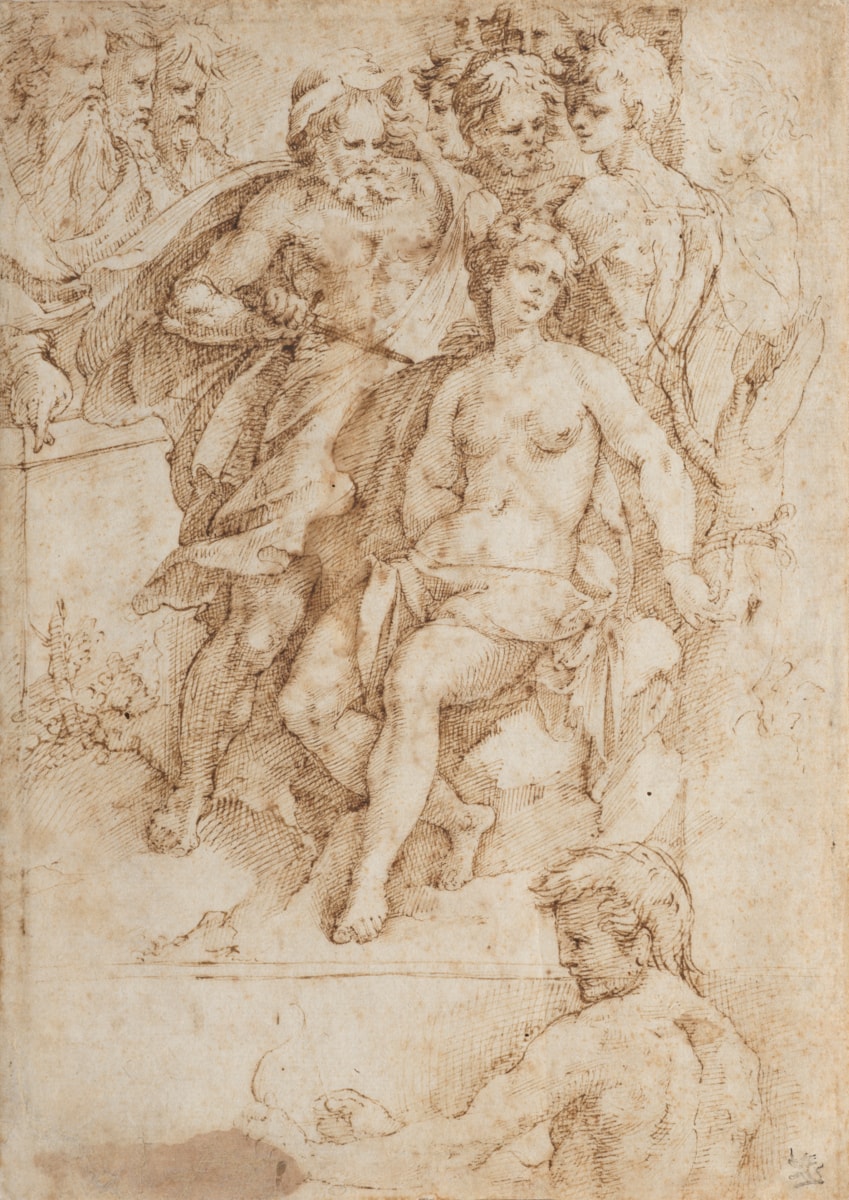
Jacopo Zanguidi, called il Bertoia (Parma 1544 - Parma 1573)
The sacrifice of Iphigenia (?) (recto); Studies of putti (verso)
Description:
collector’s mark, lower right (recto): L. 2799; collector’s mark, lower centre (recto): L. 2200; inscribed, in brown ink (verso): 276; collector’s mark, lower left (verso): L. 2383
pen and brown ink
265 x 190 mm
Provenance:
Alexandre-Pierre-François Robert-Dumesnil (1778–1864), Paris [L. 2200]
his sale, Phillips, London, 18 May 1838, lot 688 (as Parmigianino)
William Mayor (1826-1874), London [L. 2799]
his sale, London: June 1875, Lot 210 (as Girolamo Mazzuoli)
Charles Fairfax-Murray (1849-1919), London [formerly on his mount inscribed: study for one of the arches of the cupola / in the cathedral at Palma]
Walter Schrott (b. 1878), Tyrol [L. 2383]
C.G. Boerner, Leipzig: 19 February 1942, Lot 523 (as Francesco Mazzola (Mazzuoli), gen. Parmigianino)
Private collection, Paris, until 2008
with Day & Faber, London
where acquired by the present owner in February 2008
Literature
A catalogue of the collection of drawings by the Old Masters, formed by the late W. Mayor, esq., of Bayswater, London, 1875, p. 47, no. 210 (as Girolamo Mazzuoli)
Note:
From tracing its long and distinguished provenance, it can be seen that this drawing has long been associated with the school of Parma and the circle of Girolamo Francesco Maria Mazzola, called Parmigianino (1503-1540). Historically attributed to Parmigianino himself and to his cousin-in-law, Girolamo Mazzola Bedoli (1505–1569/70), it has now been identified by Professor David Ekserdjian and Dr Maria Cristina Chiusa as the work of Jacopo Zanguidi, called il Bertoia (1544–1573).
Bertoia’s brief career, spanning little more than a decade from the 1560s until his premature death in 1573, attests to Parmigianino’s enduring posthumous legacy in Parma. Details such as the trio of heads in the upper left corner are notably Parmigianinesque and reminiscent of the older artist’s characteristic assemblages. However, as Diane de Grazia observes, Bertoja’s figures are “heavier and more muscular” than those of Parmigianino. The latent influence of Parmigianino suggests that this drawing can be dated to the mid-to-late 1560s.
Please contact us for a full catalogue entry.
